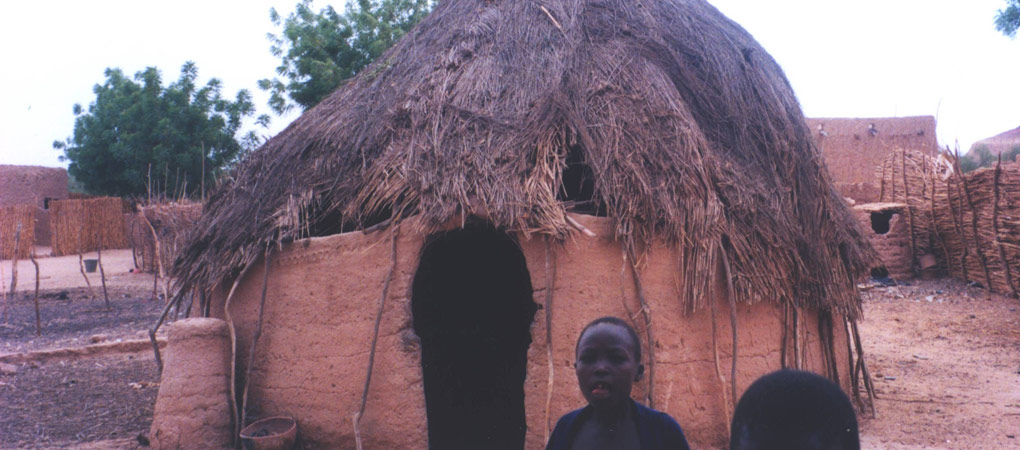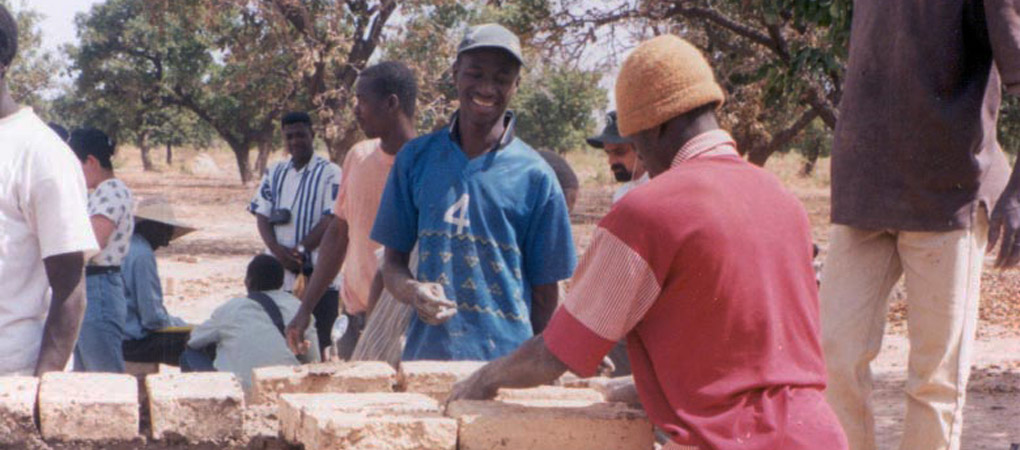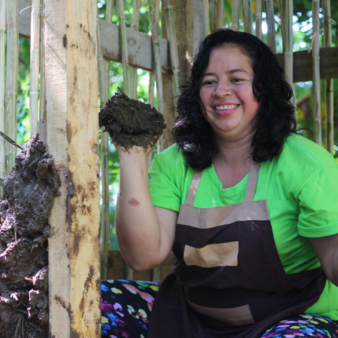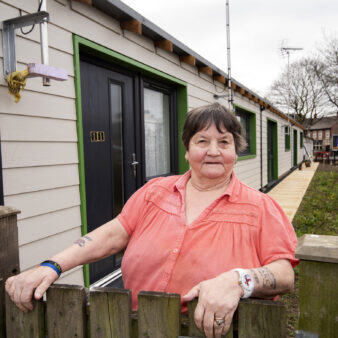Burkina Faso, Mali and Niger are located in the Sahel, a semi-arid region of Africa, immediately south of the Sahara Desert. This is one of the poorest areas in the world with few natural resources, where the majority of the people live by subsistence farming and herding. Drought and over consumption of wood and organic materials over the past twenty years has led to a depletion of local wood supplies. Good timber for construction is now extremely scarce and expensive. The over-use of timber has led to soil erosion and progressive desertification. Small round mud huts with grass roofs or earth block houses that use large amounts of wood in the flat roof construction are the main forms of housing in the region and are fast becoming neither viable nor sustainable.

Woodless construction – vault and dome roofing using hand-moulded mud bricks – was introduced into the Sahel in 1980 by Development Workshop, a small Canadian and French registered NGO, concerned with developing and promoting sustainable solutions to housing problems. The vault and dome roofing techniques have their origin in the Middle-East.
Alternative roofing materials of cement or tin sheeting are too expensive for the vast majority of people to use. Since locally available earth provides an abundant building material, and people are familiar with hand-moulding their own bricks, the use of woodless construction methods presents an affordable roofing technique, as well as reducing the rate of timber depletion and environmental degradation.
Other advantages of the woodless construction method are that the roofs do not collapse unexpectedly (a common problem with the flat roofs), the houses are cooler in the hot season and warmer in the cold season, they are cheaper to build than houses with good quality wood and last longer. The houses are also seen to be prestigious and confer status in the villages.
The walls and foundations of the buildings are made of large earth blocks similar to general local wall building practice. The roofs are domed or vaulted rather than flat and are built using small earth bricks rather than large timbers. No formwork is needed during construction. Hand-moulded, sun-dried earth bricks and mortars are used. No cement is added and very little special equipment is needed. The use of earth bricks suits the local climate, where it rains only infrequently but in short, intense showers. Smooth angled curves and large gutters help to ensure a good flow of water off the roof so that there is no water damage, even in periods of very heavy rainfall. The buildings are strong and have a predicted life of many years, providing that they are adequately maintained.
The building technology suits both the formal and informal building sectors and is equally suitable for building hospitals, mosques and offices as well as simple shelters and larger houses. Single domes can be used to cover square as well as round spaces and vaults tend to be used to cover rectangular spaces. The combination of several vaults and domes can be used in simple or more complex combinations to satisfy a variety of building requirements. Many non-governmental organisations working in the Sahel as well as governmental organisations are now using these construction methods for buildings they need in the rural areas.
Introducing woodless construction has been and remains a process, not a product. The first woodless building activities in the early 1980s provided on-the-job training for a small number of local masons. In this early period, major adaptation of the middle-eastern techniques to suit local skills took place, mostly thanks to Development Workshop associate Peter Tunley’s working and discussing with local builders in northern Niger. This work provided the nucleus from which regional activities have grown.
As demand for skilled builders grew, it became necessary to provide dedicated training courses. Development Workshop designed an eight week training course for novice builders, and training began on a regular basis in 1992. Development Workshop has trained local trainers, who work with a trainers manual, and today the training courses are run and managed by local teams. To date, over 720 masons have been trained. Adaptation to local conditions also continues, to make the techniques ever easier to learn, stronger, and better suited to various local needs.
A trained mason makes a good living, earning three times more than he would do as a labourer, as well as being a respected member of the community. Refresher courses for masons and easy to understand training manuals designed by Development Workshop are provided in order to be able to maintain high quality control of the dwellings being built. Emphasis is also placed on ensuring that families understand the need to maintain their dwellings.
Well over 1,000 woodless buildings are recorded as having been built, although many more have now been completed as the design and construction methods are assimilated into the building culture throughout the Sahel. There has been little resistance to the technology, which has the obvious advantages of being cheaper than modern material alternatives and longer lasting than traditional (wood-consuming) techniques as well as providing a good quality house. The process is labour intensive and provides employment for many men who would otherwise be unemployed or under-employed. Over the years many alterations have been made to the design and construction process (essentially based on the Nubian techniques revived by Hassan Fathy in Egypt in the 1950s) in order to adapt to the needs and skills of both the masons and the users, and the local context.
The average labour cost for a house in a rural area is about $110 and the bricks are made from locally available earth at little or no cost. The client family can help to provide the building labour for the mason and this helps to keep down the cost. The houses are paid for by the local people themselves. In rural areas the masons often willing to work for barter (goats, food), especially if the house is for a member of their extended family or a friend. In an urban area the cost is nearer $400 since the building materials have to be purchased and transported, in addition to the labour costs. The cost of the training programmes for the masons is grant-aided with external funds but all direct costs of construction are met by the client families.
Woodless construction has made a very real difference to the lives of some of the poorest people in the world but it is not necessarily restricted to arid regions. It encourages self respect, self-help, provides employment and creates income generation opportunities as well as providing a low-cost housing solution in the many areas around the world that are facing an increasing shortage of timber. For the families who live and work in these buildings, woodless construction means a better, and affordable, environment.
Partnership
NGO, local community, donor agency




